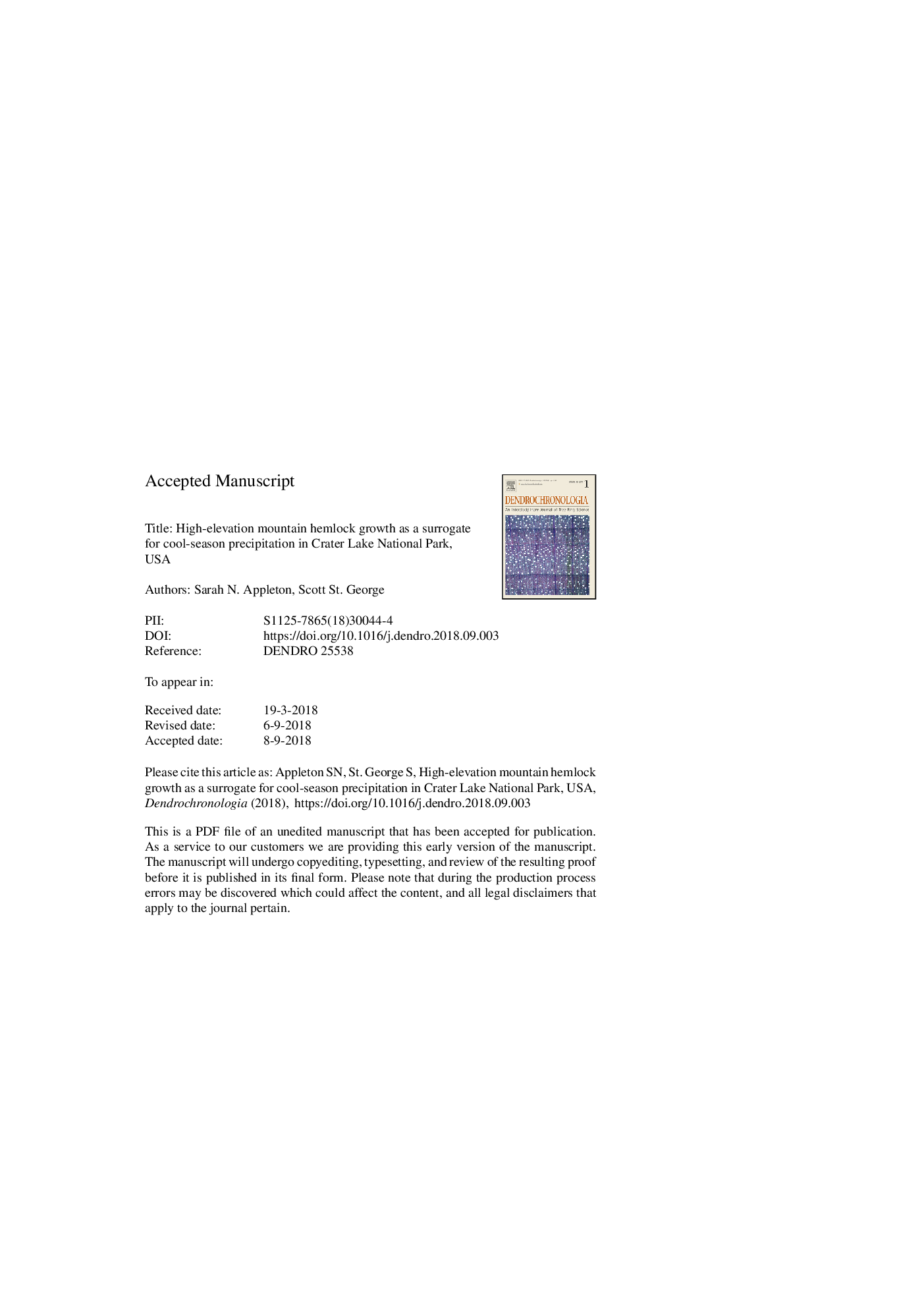| کد مقاله | کد نشریه | سال انتشار | مقاله انگلیسی | نسخه تمام متن |
|---|---|---|---|---|
| 10224967 | 1701142 | 2018 | 27 صفحه PDF | دانلود رایگان |
عنوان انگلیسی مقاله ISI
High-elevation mountain hemlock growth as a surrogate for cool-season precipitation in Crater Lake National Park, USA
دانلود مقاله + سفارش ترجمه
دانلود مقاله ISI انگلیسی
رایگان برای ایرانیان
موضوعات مرتبط
مهندسی و علوم پایه
علوم زمین و سیارات
علم هواشناسی
پیش نمایش صفحه اول مقاله

چکیده انگلیسی
Snow dominates the hydrology and climate of the United States' central Pacific Coast, but because local measurements of snowpack and winter precipitation often extend back only a few decades, observations by themselves are not adequate to describe potential amplitude of wintertime conditions. Here we present a set of updated and extended mountain hemlock (Tsuga mertensiana [Bong.] Carr.) tree-ring width records from Crater Lake National Park, Oregon, and use these data to make inferences about snowpack prior to the start of instrumental monitoring. In July and August 2013, we collected cores from 228 trees at seven high-elevation hemlock stands that surround the crater's rim. The oldest tree had an inner ring date of CE 1474, and the longest ring-width chronology maintained a satisfactory common signal back to the middle of the 16th century. The growth of high-elevation mountain hemlock is strongly and inversely related to cool-season precipitation, making these records some of the most southerly examples of a robust inverse cool-season moisture signal in North American tree rings. The growth of these snow-limited forests does not appear to have been affected by the substantial decline in spring snowpack observed in the past two decades across the broader Cascade Range, and we did not find any indication of changing relationships between tree growth and either monthly or seasonal winter precipitation since the early 1990s. The exceptional three-year sequence in Crater Lake tree rings between CE 1809 and 1811, which includes the narrowest ring since CE 1540 and anatomical abnormalities produced by cold weather, leads us to conclude that 1809-1810 was the most snowy and severe winter to affect south-central Oregon during the past four and a half centuries.
ناشر
Database: Elsevier - ScienceDirect (ساینس دایرکت)
Journal: Dendrochronologia - Volume 52, December 2018, Pages 20-28
Journal: Dendrochronologia - Volume 52, December 2018, Pages 20-28
نویسندگان
Sarah N. Appleton, Scott St. George,